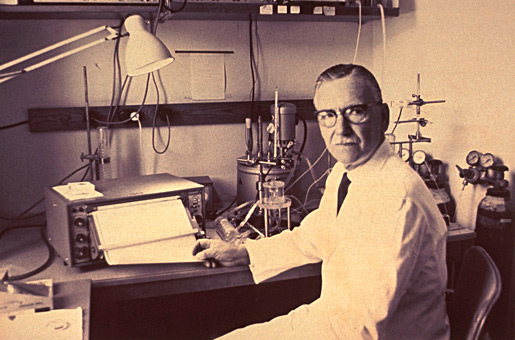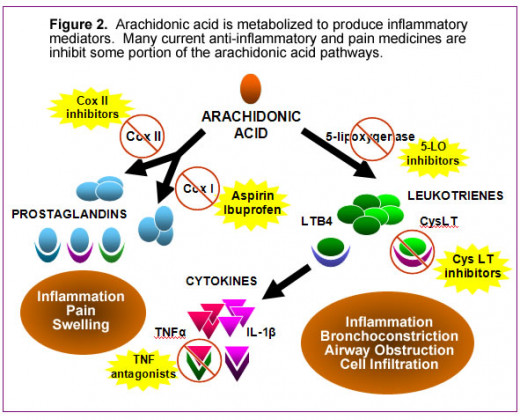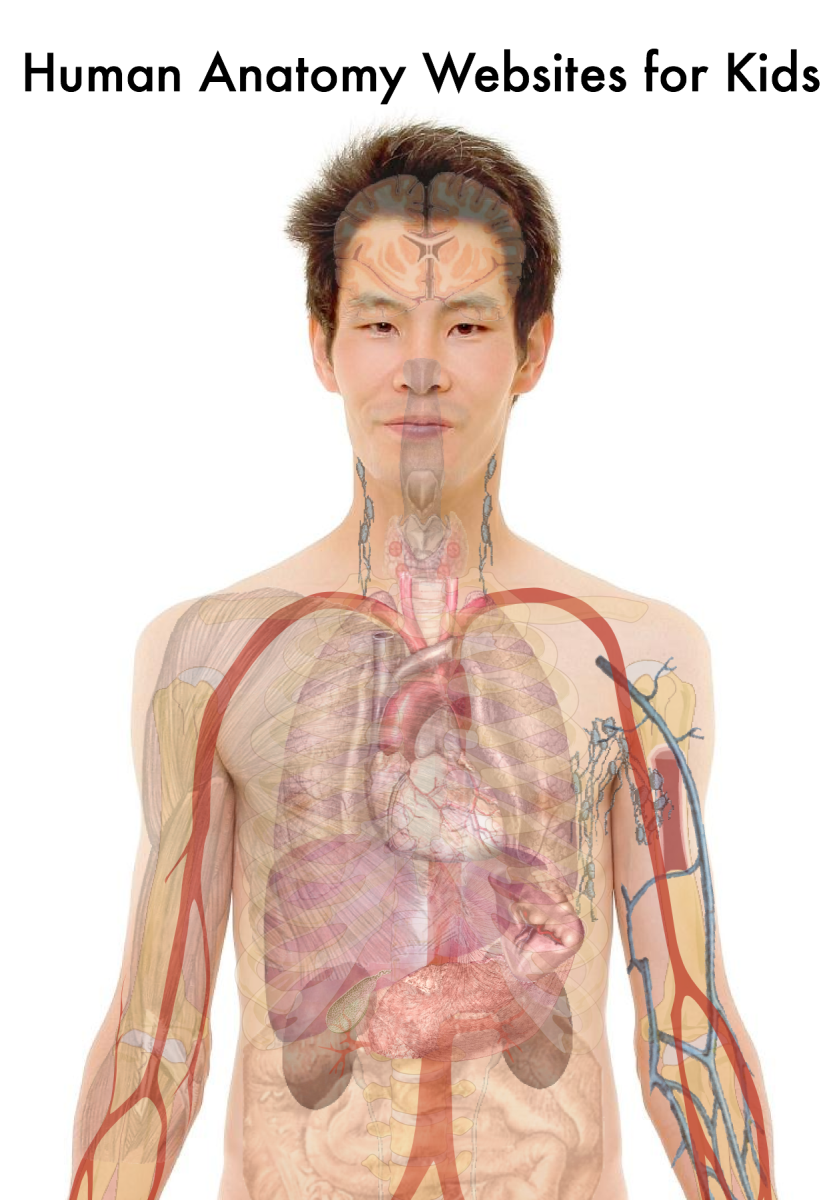Prostaglandins: Clinical Relevance, Physiological Significance And Therapeutic Use
Noble Prize Laureate Von Euler, 1970

Endocrine Diseases
Prostaglandins
This name was coined by Von Euler in 1930. Prostaglandins are 20- carbon hydroxyl fatty acids containing a cyclopentene ring and two chains.
Arachidonic acid is the main precursor for the synthesis of prostaglandins (PG). Microsomal enzyme systems (prostaglandin synthetase) are required for this conversion. An enzyme cyclo-oxygenase is essential for the formation of prostaglandins. Several therapeutic agents like aspirin inhibit this enzyme. Virtually all tissues contain PG which are biologically very active. Several PGs are known. Most common among the natural PGs in tissues and body fluids are PGI2 and PGF2.
Prostaglandins are produced and released at their site of action to act as “local hormones” and they are active even in very low concentrations. They are almost completely cleared in one circulation through the lungs.
Thromboxane: This is produced by platelets from arachidonic acid. It is a powerful platelet aggregating agent. The initial product is thromboxane A2 which is unstable. It is soon converted into the stable form thromboxane B2.
Prostacyclin: The endothelium of blood vessels can generate cyclic endoperoxides via cyclo-oxygenase. From these, the vessel walls generate prostacyclin (PGI2 epoprostanol) which causes vasodilatation and powerfully disaggregate platelets. The lung is the source of large amounts of prostacyclins.
Physiological actions of prostaglandins: Prostaglandins are present in almost all tissues and they take important roles in several metabolic processes.
- They facilitate sperm motility and transport, ovulation and tubal contractility. These factors increase fertility.
- Luteolysis and menstruation.
- Parturition/Spontaneous abortion, premature or term-labour.
- They regulate the tone of smooth muscles in blood vessels and thereby control blood flow in several regions. Patency of the ductus arteriosus in the neonate is maintained by PG. They also pay a role in regulation of blood pressure. On the bronchi, both constrictor and dilator actions are seen.
- They are involved in the formation of rennin and angiotensin, natriuresis and water dieresis.
- They modulate the inflammatory response.
- They modulate the effects of other hormones.
Prostaglandins are finding wider use in the therapy of various disorders.
The Therapeutic Use Of Prostaglandins

Therapeutic Uses
Reproductive system: The PGI2 and PGF2 are used to induce labour or abortion. They are most effective when administered intra-amniotically, but intravaginal, oral, intramuscular ad intravenous administration are also effective.
Cardiovascular system: In the newborn with patent ductus arteriosus, prostaglandin antagonists like indomethacin helps in closing the ductus. On the other hand, infants with congenital cyanotic heart disease, where patency of the ductus is essential for life, the use of PGE helps in heeping the ductus patent. PGF2 is used as an antiarrhythmic drug. In peripheral vascular diseases, intra-arterial infusion of PGE or prostacyclin, has been used to treat Raynaud’s syndrome and other arterial disorders.
Alimentary system: 15-Methyl and 16, 16-dimethyl prostaglandin are potent inhibitors of gastric secretion when given orally and they have been found useful in gastric ulcer. In secretory diarrhea, which is the result of pancreatic tumours or post-irradiation damage of the intestine, prostaglandins play a role and PG inhibitors like indomethacin are effective in their control.
Respiratory System: The PGE compounds are bronchodilators while PGF2 are bronchoconstrictors. Even when adrenaline is ineffective, prostaglandins can be tried in asthma.
Hemostasis: Thromboxane A2, synthesized by the platelets, stimulates platelet adhesion and aggregation. The endothelial cells lining blood vessels form prostacyclin (PGI2) which prevents aggregation of platelets.
Aspirin is used for inhibition of synthesis of thromboxane A2 and this inhibits platelet aggregation.
Preparations: Several preparations are available- PGF2 as 5 mg/ml solution ( 4 and 8 ml ampoules) for intra-amniotic injection and PGE2 in the form of suppositories for the same purposes.
Side effects of prostaglandins: These may cause side effects on systemic administration. They include local reaction at the site of injection, nausea, vomiting, abdominal cramps, diarrhea, headache, bronchospasm, hypotension and convulsions.
© 2014 Funom Theophilus Makama




